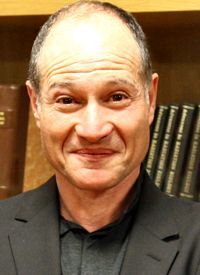Consolidation Approach Extends PFS in Multiple Myeloma
Consolidation therapy with lenalidomide, bortezomib, and dexamethasone (RVD), when used in conjunction with stem cell transplantation, extended progression-free survival compared with RVD alone in patients with multiple myeloma.
Michel Attal, MD, Centre Hospitalier Regional Universitaire Hôpital Purpan in Toulouse, France

Michel Attal, MD
Consolidation therapy with lenalidomide, bortezomib, and dexamethasone (RVD), when used in conjunction with stem cell transplantation, extended progression-free survival (PFS) compared with RVD alone in patients with multiple myeloma.1 However, in results from Intergroupe Francophone du Myélome (IFM) 2009 trial published in New England Journal of Medicine, researchers found that overall survival (OS) was similar for both treatments.
“Our results suggest that the use of a combination therapy that incorporates newer proteasome inhibitors, next-generation immunomodulatory drugs, and potent monoclonal antibodies along with transplantation tailored according to minimal residual disease detection could further improve outcomes among adults up to 65 years of age who have multiple myeloma,” Michel Attal, MD, of the Centre Hospitalier Regional Universitaire Hôpital Purpan in Toulouse, France, and coinvestigators wrote. “Transplantation was also associated with a higher rate of complete response, a lower rate of minimal residual disease detection, and a longer median time to progression.”
During this open-label, phase III trial, researchers at 69 centers in France, Belgium, and Switzerland assigned 700 patients with multiple myeloma to three 21-day cycles of RVD. Patients received 25 mg of oral lenalidomide (Revlimid) on days 1 through 14, 1.3 mg/m2 of body-surface area IV bortezomib (Velcade) on days 1, 4, 8, and 11, and 20 mg of oral dexamethasone on days 1, 2, 4, 5, 8, 9, 11, and 12.
After the induction phase, all the patients underwent stem-cell mobilization with cyclophosphamide and granulocyte colony-stimulating factor.
During the consolidation phase, patients were randomly assigned to 5 cycles of RVD with a reduced daily dose of 10 mg of dexamethasone (n = 350) or 200 mg/m2 of IV melphalan plus autologous stem-cell transplantation (ASCT) followed by 2 cycles of RVD with 10 mg of dexamethasone (n = 350).
Both groups were assigned to maintenance therapy with lenalidomide (10 mg per day for the first 3 months, with a possible dose increase to 15 mg thereafter, depending on side effects) to begin within the first 3 weeks after the completion of consolidation therapy. Maintenance therapy continued for 1 year, or until the occurrence of disease progression or unacceptable adverse events or the withdrawal of patient consent.
The rate of complete response was 59% in the ASCT group compared with 48% in the RVD only group (P = .03). The rate of good partial response was 45% in the RVD only group versus 47% in the ASCT group after the induction phase (P = .87), 69% versus 78% after the consolidation phase (P = .03), and 76% versus 85% after the maintenance phase (P = .009).
Researchers did not detect minimal residual disease in 65% of patients in the RVD only group compared with 79% of the patients in the ASCT group (P <.001). Patients who did not have minimal residual disease had superior PFS (HR, 0.30) and OS (HR, 0.34) compared with patients who had detectable minimal residual disease.
Median time to progression was 36 months in the RVD-alone group compared with 50 months in the ASCT group (adjusted HR for disease progression or cancer-specific death = 0.62; P <.001). OS at 4 years was similar between the 2 groups and neither group reached median survival.
In the RVD group, 207 patients experienced progression and 172 symptomatic patients received a second-line therapy. Of those, 136 patients underwent salvage transplantation following second-line therapy. The remaining 36 patients did not received transplantation due mainly to disease refractoriness.
In the ASCT group, 149 patients had disease progression and 123 symptomatic patients received a second-line therapy. Of those patients who were treated for progression, 21 (17%) underwent a second transplantation at the time of progression.
Thirty-two patients (9%) discontinued treatment because of AEs in the RVD group, and there were 2 treatment-related deaths. Thirty-nine patients (11%) in the ASCT group discontinued due to AEs and researchers observed 6 treatment-related deaths. Patients in the ASCT group were more likely to experience grade 3/4 blood and lymphatic-system disorders (95% vs 64%; P <.001), gastrointestinal disorders (28% vs 7%; P <.001), and infections (20% vs 9%, P <.001).
Writing in an accompanying editorial, Charles A. Schiffer, MD and Jeffrey A. Zonder, MD, both with the Karmanos Cancer Institute at Wayne State University, said these results are more relevant than older studies comparing transplantation with other therapies.2 They praised IFM researchers for evaluating a “realistic” combination of immunomodulatory drugs and proteasome inhibitors associated with high response rates similar to those seen with transplantation.
“A question remains as to whether all patients with multiple myeloma should undergo immediate autologous stem-cell transplantation, since the use of delayed transplantation resulted in similar overall survival, with some patients not needing transplantation to date. The observed lack of a survival benefit for early transplantation was consistent with previous results that suggested salvage transplantation is an equalizer in this regard,” they wrote. “In summary, transplantation resulted in a deeper and longer initial treatment response than did a nontransplantation approach. However, the benefits of transplantation were more modest than some might have hoped, and it did not appear to be curative.”
References
- Attal M, Lauwers-Cances V, Hulin C, et al. Lenalidomide, bortezomib, and dexamethasone with transplantation for myeloma. N Engl J Med. 2017;376:1311-1320.
- Schiffer CA, Zonder JA. Transplantation for myeloma—now or later? N Engl J Med. 2017;376:1378-1379.